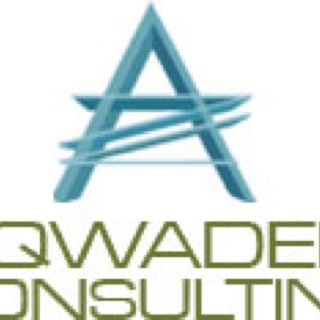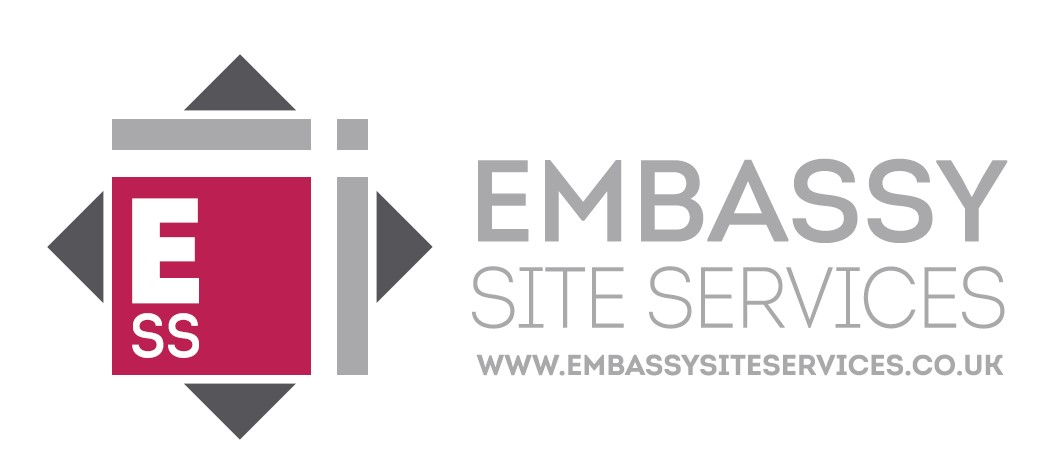Information
-
Audit Title
-
Document No.
-
Client / Site
-
Conducted on
-
Prepared by
-
Location
-
Personnel
Previous Audit Report
-
Has the previous audit report been closed out?
-
Have all previous issues been cleared?
ESAP ID 1: Management Controls
-
Have appropriate signs/notices been erected around the site i.e. mandatory use of PPE, Incomplete Scaffolds, No Smoking, Traffic Management, Fire assembly, Fist Aid Points etc.
-
Ensure that all persons are familiar with the requirements of the site safety rules
-
Ensure all contractors have been provided with information
-
Ensure adequate supervision is provided for all activities on the site paying particular attention to work activities as undertaken by young persons and/or those which are high risk activities.
-
Ensure site safety rules are displayed in a prominent position e.g. reception, canteen, site office etc.
-
Ensure all site operatives, including sub-contractors have a valid licence or permit to work<br>
-
Management controls compliant?
ESAP ID : 29 Access and Egress
-
Is there safe access and egress to all working areas of the site?
-
Have pedestrian walkways been provided to protect them from moving vehicles?
-
Are walkways free from obstructions and stored materials?
-
Are access routes adequately lit?
-
Access and Egress compliant?
ESAP ID : 29 Access - External
-
Ensure site access points are clearly signposted on the approaches to the site.
-
Ensure adequate on-site signage is provided to warn and advise both vehicle drivers and pedestrians.
-
Ensure that adequate lighting is provided, including flashing amber warning beacons where appropriate.
-
Ensure any lighting does not cause a nuisance to local residents.
-
Ensure that there is always a clear access route to and from all parts of the site.
-
Have access routes been agreed with the fire and other emergency services prior to the start of works.
-
Ensure the approaches to the site are kept clear of site traffic.
-
Are major deliveries timed so as to avoid school drop-off and pick-up times and other rush hour times?
-
If necessary has the use of traffic lights to control traffic around site entrances been considered?
-
Ensure approach roads are kept clean and tidy and that any debris is removed promptly.
-
Ensure there are suitable barriers and warning notices to keep members of the public separated from the site works and site traffic.
-
Ensure safe pedestrian access is provided across all site entrances.
-
Where work at height is carried out adjacent to the public highway/footpath ensure that protective fans or other measures are provided to safeguard members of the public.
-
Ensure the site is securely fenced at all times to prevent unauthorised access.
-
Are the following carried out At the end of each day/shift ;<br><br>secure tools, plant and equipment; remove or board ladders to restrict access; cover and fence excavations; store and secure hazardous materials/substances; ensure materials are properly stacked and choked.
-
Ensure all public access routes are kept clean and clear at all times.
-
Ensure adequate signage is provided to direct members of the public.
-
External Access Compliant?
ESAP ID : 29 Asbestos Management
-
Has a detailed risk assessment and method statement been carried out?
-
Is the removal company licenced?
-
Asbestos Management Compliant?
ESAP ID : 19 Confined Spaces
-
Confined Spaces include manholes, shafts, pits/tanks, pipes/culverts, certain excavations, silo's and other confined/enclosed spaces.
-
Is there a risk assessment for the confined spaces work?
-
Controls should include atmospheric monitoring, emergency escape arrangements, adequate supervision (i.e.: a top man outside of the confined space), method of raising the alarm and safe access/egress etc.
-
Confined Spaces compliant?
ESAP ID : 20 Control of Substances Hazardous to Health (COSHH)
-
Have COSSH Assessments been carried out for all potentially hazardous materials and substances being used on the site.
-
Are material safety data sheets available to assist with COSHH assessments.
-
Have the hazards associated with the use of such materials been properly communicated to those affected.
-
Are alternative safer substances available which can be used as substitutes.
-
Ensure all dangerous/hazardous materials/Substances are clearly marked/identified and stored in a secure location appropriate to the substance.
-
Have the appropriate control systems and PPE been provided and is the PPE being used.
-
COSHH Compliant?
ESAP ID : 19 Electrical Equipment
-
Check that all necessary utility services are provided on site before work begins.
-
Ensure that existing services e.g.: electricity cables, gas mains etc have been identified and effective steps have been taken to prevent danger from them.
-
Check that low voltage tools and equipment are being used wherever possible.
-
Check that only 110v CTE hand tool etc are in use.
-
Ensure that cables and trailing leads are not trip hazards.
-
Check that all temporary supplies are effectively bonded to Earth.
-
Do all temporary supplies have a means of isolating both poles and locking off?
-
Ensure that suitable and sufficient task lighting is provided to enable operatives to safely carry out their work.
-
Electrical Equipment compliant?
ESAP ID : 1 & 14 & 15 Evironmental Management
-
Is a local drainage plan available on site?
-
Are any concrete washout facilities suitable?
-
Are any consents required?, if so are they being monitored and complied with?
-
Are any noise/dust issues present and are they being suitably controlled?
-
Are weekly environmental checks taking place?
-
Is plant and equipment fitted with suitable and effective silencers?
-
Any evidence of liaison with local schools?
-
Is hazardous waste managed and disposed in compliance with pertinent Turkish regulations?
-
Are spill kits available?
-
Located in the correct areas?
-
Staff and operatives aware of their location?
-
Have emergency drills taken place?
-
Is their location communicated via induction?
-
Are the contents regulary checked?
-
Working on or near water
-
Is any silty water being treated or disposed of to foul?
-
Are appropriate pollution prevention measures in place and adequate?
-
Are soil heaps located away from rivers/streams?
-
Environmental Management compliant?
-
Local Community
-
Is there a complaints procedure in place?
ESAP ID : 29 Excavations/Earthworks
-
Ensure that checks are made to determine the presence of any buried services before and during all excavation works.
-
All excavations should be carried out in accordance with a detailed method statement s and permit to dig. Is there a permit to dig?
-
Check that there is safe access into the excavation (i.e.: a sufficiently long and secured ladder).
-
Check that barriers or other protection to stop people/vehicles falling in are in place.
-
Does the excavation affect the stability of neighbouring structures or services.
-
Ensure that materials, spoil and plant is stored away from the edge of the excavation to reduce the chance of collapse.
-
Ensure that the excavation is regularly inspected by a competent person and that a record of such inspections is maintained.
-
Excavations/Earthwork compliant?
ESAP ID : 22 Fire Risks and Management
-
Is there a fire risk assessment in place?
-
Ensure there are emergency procedures for evacuating the site in case of a fire, flood, explosion etc.
-
Ensure all staff know what these procedures are and that they form part of the site induction.
-
Check that the emergency services have been informed of the location of the works, the key hazards and the emergency procedures.
-
Ensure that there are adequate escape routes and that these are kept clear of obstructions.
-
Ensure that the quantity of flammable materials, liquids and gases are kept to a minimum and are adequately stored.
-
Ensure that smoking and other ignition sources are banned in areas where gases or flammable liquids are stored or used.
-
Check that flammable and combustible waste is removed regularly and stored in suitable bins and skips.
-
Check that suitable fire extinguishers are provided and that they are maintained and in a good condition.
-
Check that all fire extinguishers have had an annual inspection.
-
Fire Risk and Management compliant?
ESAP ID : 23 First Aid
-
An appropriate number of trained and qualified first aiders should be available on the site.
-
Check the number of first aiders required, this is dependent on the type of work or operations, the number of workers on site and any special or unusual hazards.
-
Ensure the first aid kit is available and accessible with ease.
-
The location of the first aid box should be indicated on the site notice board and the door of the room in which it is contained. Are they clearly indicated?
-
Signs directing persons to the site of the first aid book should also be provided.
-
First Aid requirements compliant?
ESAP ID : 1 Health & Safety Management Plan
-
Ensure the project management plan is up to date and signed by all relevant parties.
-
Is an emergency plan defined and in place complete with emergency contact numbers?
-
Is the plan meaningful and communicated to all parties, including sub contractors?
-
Are responsibilities defined?
-
Health and Safety Management Plan compliant?
ESAP ID : 19 & 20 & 25 Lifting Operations/Equipment
-
Ensure a (competent) Appointed Person co-ordinates all lifting operations.
-
Have all lifting operation got a valid lifting plan?
-
Ensure that all lifting equipment has been tested and installed by a competent person and is regularly maintained and inspected.
-
Check that the operators are trained and competent.
-
Ensure that cranes and other lifting equipment has sufficient space to operate safely.
-
All lifting equipment should have a thorough examination every 6 months.
-
Ensure lifting operations do not take place near overhead power lines and excavations.
-
Lifting Operations/Equipment compliant?
ESAP ID : 19 & 20 Manual Handling
-
Ensure that a manual handling risk assessment has been completed wherever regular lifting of heavy loads is required.
-
Ensure all staff have received manual training.
-
Manual Handling compliant?
ESAP ID : 1 & 19 & 20 Occupational Health, Noise and Associated Health Risks
-
Ensure reduced-vibration tools are used wherever possible.
-
Check vibration tools are properly maintained.
-
Check whether health surveillance for people exposed to high levels of hand-arm vibration over long periods is in place.
-
Check that exposure to HAV has been reduced as much as possible by selecting suitable work methods and Plant.
-
Ensure that workers have had training so they are aware of the risks from noise on site and what they need to do to avoid these risks.
-
Occupation health, Noise and associated risks compliant?
ESAP ID : 1 & 19 & 20 Personal Protective Equipment (PPE)
-
PPE General Requirements - Ensure PPE compatibility issues have been considered and that one piece of PPE not restrict the effectiveness of another piece of PPE.
-
Ensure that PPE is issued on an individual basis.
-
Ensure that it is suitable for the type of work being undertaken.
-
Check that the PPE is marked with the genuine 'CE' mark to help identify type of protection.
-
Check that it is kept in good condition.
-
Ensure that it is appropriately replaced.
-
Ensure all staff and visitors are wearing Hi-Viz vests or jackets.
-
Eye Protection
-
Ensure that it is of a suitable grade for the type of work being undertaken. I.e. light protection or full goggle etc.
-
Check that it is kept in good condition.
-
Foot Protection
-
Ensure that footwear is manufactured to CE standards.
-
Ensure that footwear is fitted with steel toecaps and steel sole plates.
-
Hand Protection - Ensure that where damaged to the hands may occur through activities such as handling, or when using hazardous substances/chemicals that all persons affected wear the appropriate class of safety glove.
-
Are all gloves free from damage?
-
Ensure gloves are the correct size.
-
Ensure gloves are correct for their application and the activity being undertaken.
-
Check that hands are washed frequently after spells of work.
-
Check the availability of barrier creams and skin cleansers.
-
Hearing Protection
-
Ensure the correct type of protection is in use for the task.
-
Ensure that hearing protection is used as instructed.
-
Where ear plugs are in use ensure the correct size ear plugs are being worn.
-
Ensure that hearing protection is kept clean and checked regularly for damage.
-
Ensure Areas which are mandatory hearing protection zones are signed as such using the appropriate signs.
-
Respiratory Protection (RPE) - Avoid the use of nuisance dust masks.
-
Ensure that the correct type of respiratory equipment is used for the works being undertaken.
-
Ensure that persons are trained for the use of the RPE and where applicable have a face fit test to ensure the effectiveness of the RPE.
-
Ensure that all equipment is cleaned and checked after use.
-
Safety Helmets
-
Ensure all staff and visitors are wearing safety helmets.
-
Were all helmets found free from damage?
-
Ensure helmets are worn correctly.
-
Were helmets within their expiry date - helmets should be changed every 2-3 years.
-
PPE requirements compliant?
ESAP ID : 29 Security
-
Are the public fenced off or otherwise protected from the work?
-
Is out of hours security is place?
-
Is the perimeter fence secure and un-damaged?
-
Are all gated secured?
-
Are site security arrangements adiquate?
ESAP ID : 29 Traffic Management
-
Has a traffic management plan been prepared?
-
Are traffic management arrangement suitable and sufficient ?
-
Are pedestrians segregated from moving vehicles and plant?
-
Does the site layout match the plan?
-
Are storage areas identified?
-
Are loading areas identified?
-
Have one way or turning points been identified?
-
Are procedures in place for the unloading of vehicles to prevent fall from vehicles?
-
Are seat belts being used?
-
Are traffic management arrangement sutable?
ESAP ID : 19 & 20 Working at Height
-
Check whether the work can be undertaken without working at height.
-
Check that access equipment is erected by competent persons and checked before use.
-
Ensure safe access and egress have been provided to areas.
-
Roof Work
-
Ensure that edge protection is provided to stop people or materials falling.
-
Check that during industrial roofing, nets are provided to stop people falling from the leading edge of the roof.
-
Ensure safety nets have been hung correctly.
-
Ensure that precautions have been taken to stop people falling through fragile materials when working on roofs, e.g.: by providing barriers, covers or working platforms.
-
Ensure roof ladders are used in accordance with best practice requirements.
-
Ensure that people are kept away from areas below the roof work.
-
Ensure that ladders are in good condition, are not split, warped or have damaged rungs etc.
-
Check whether ladders are suitable for the purpose - only for short term work or for gaining access to another area.
-
Check that ladders rest against a solid level surface and that this is not a fragile or insecure material.
-
Check that ladders are secured to prevent them slipping sideways or backwards.
-
Check that ladders rise a sufficient height above their landing place (approx. 1m or 5 rungs).
-
Safe landing platforms to be provided where a ladder rises to a height of 9m or more.
-
Are work at height operation in accordance with the W@H Regulations?
ESAP ID : 19 & 20 Working on or near Water
-
Check all access passages and working platforms are clear and free from obstructions.
-
Are embark and landing points provided.
-
Check appropriate use of safety nets and that they are securely fastened.
-
Ensure that buoyancy/life saving equipment is available and accessible.
-
Ensure workers know how to raise the alarm and that they are aware of the procedures are in place if an incident in water occurs.
-
Where appropriate ensure a manned rescue boat is provided.
-
Are working on or near water compliant?
Esap Requirements
-
ESAP ID : 17 Air Impact mitigation in place ?
-
ESAP ID : 18 Noise Impacts mitigations in place ?
-
ESAP ID : 20 Risk Assesment System in place ?
-
ESAP ID : 22 Fire safety measures in place ?
-
ESAP ID: 23 First Aid Provisions in place ?
-
ESAP ID : 26 Chance finds procedures in place ?
-
ESAP ID : 29 Measures during construction works in place ?
Other
Summary
Audit Risk Level
-
Risk rating for this Audit.
Corrective Actions
Sign off
-
I confirm I have had the contents of this audit report explained to me.
-
SETEC & Aqwadem Supervisor
-
Person conducting this Audit.
-
Audit concluded at:
Closure
-
All actions on this report have been completed on:










